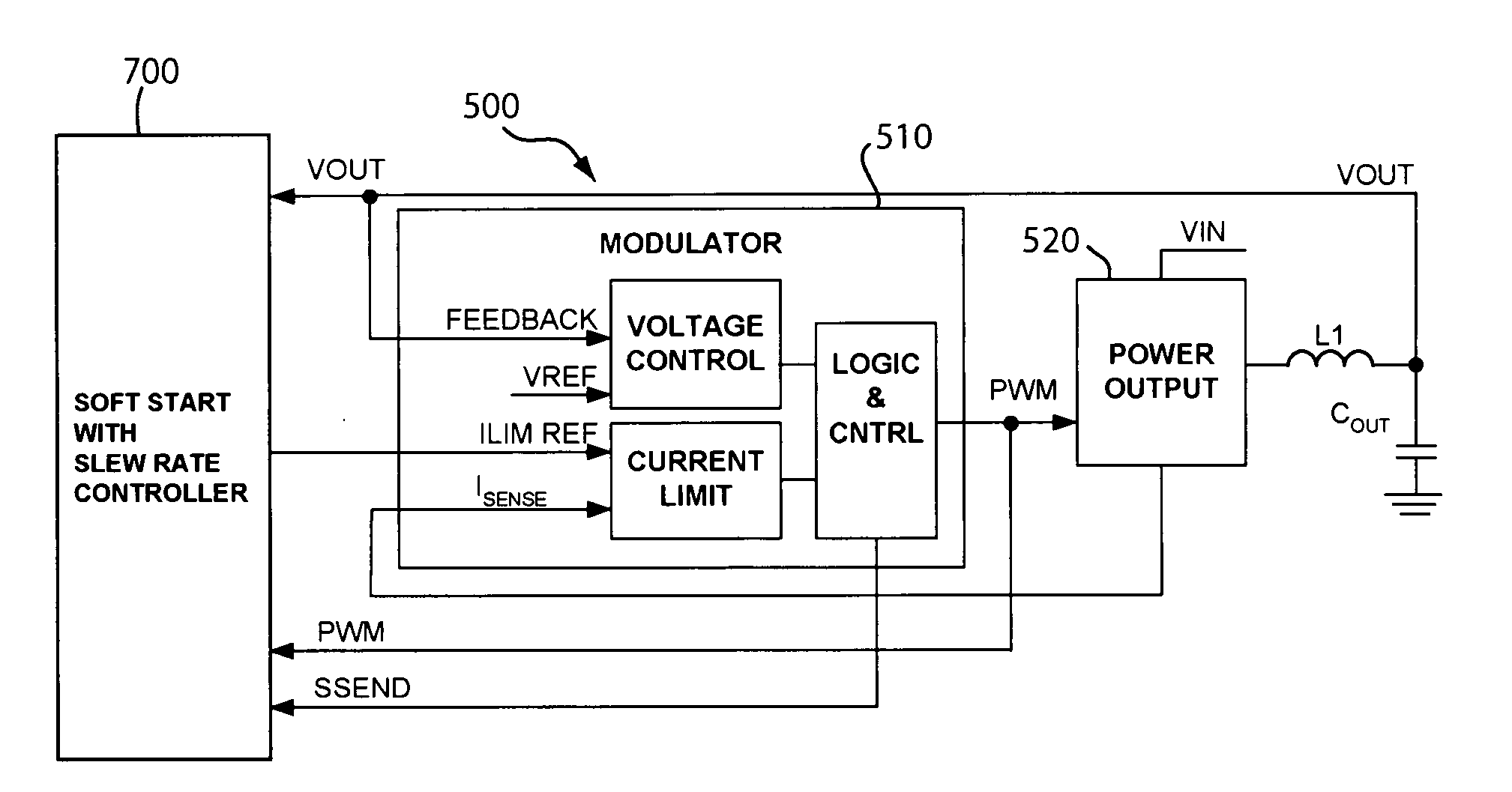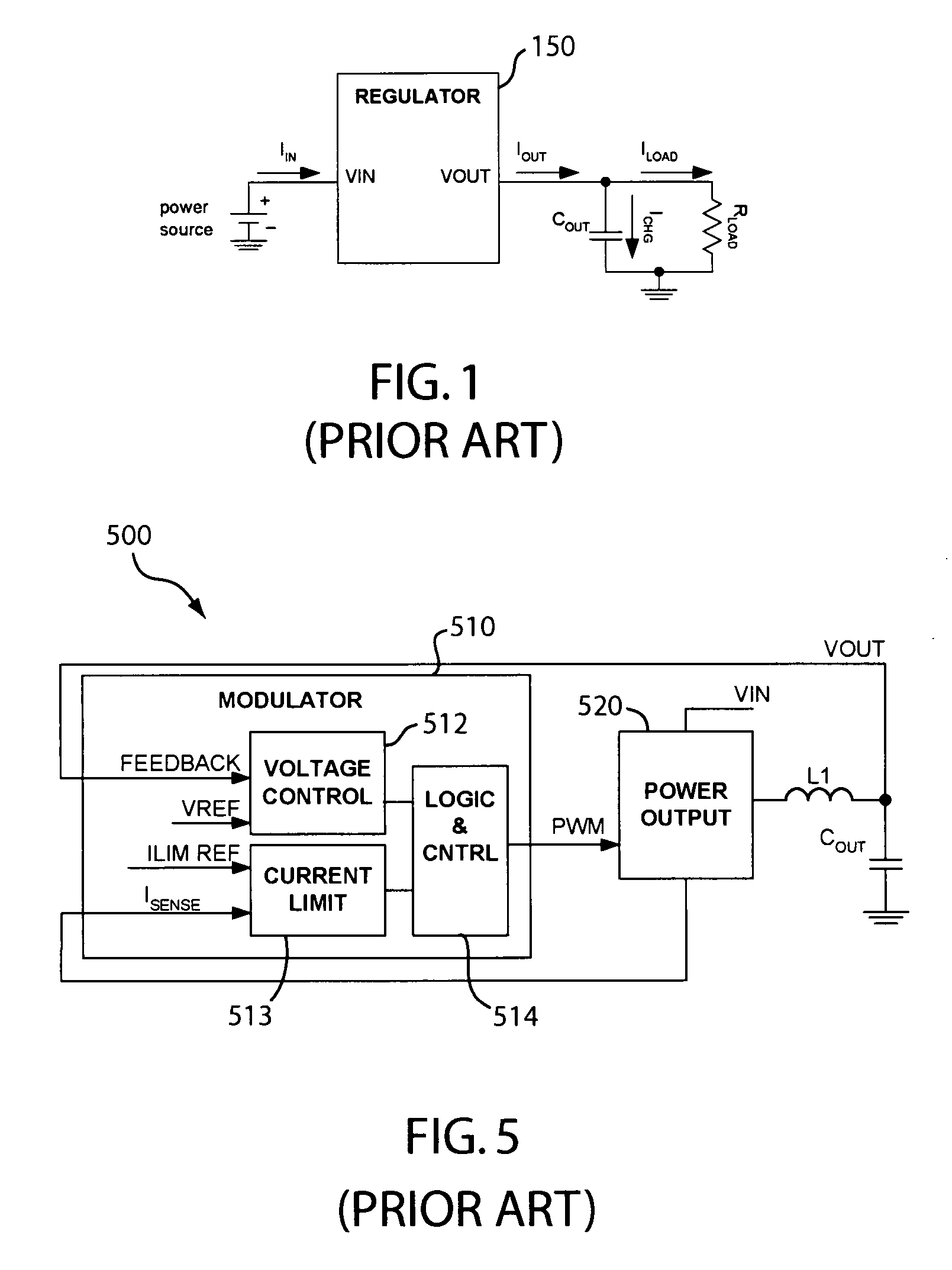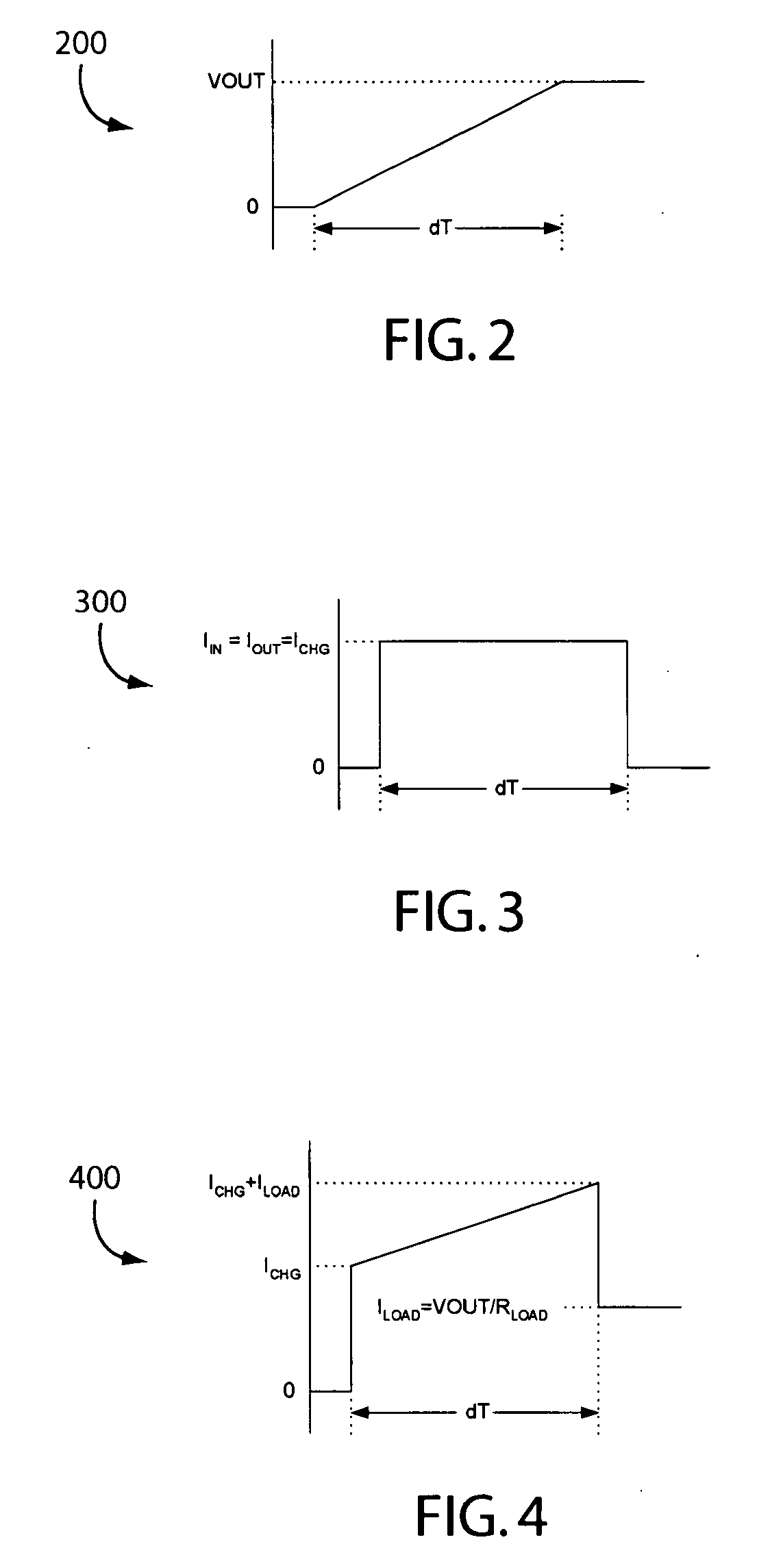Soft start circuit with slew rate controller for voltage regulators
a voltage regulator and soft-start technology, applied in the field of electric circuits, can solve problems such as output ringing, repetitive current limit hits, and other devices in the system to lose their ability to regula
- Summary
- Abstract
- Description
- Claims
- Application Information
AI Technical Summary
Benefits of technology
Problems solved by technology
Method used
Image
Examples
Embodiment Construction
[0024]In the present disclosure, numerous specific details are provided, such as examples of circuits, components, and methods, to provide a thorough understanding of embodiments of the invention. Persons of ordinary skill in the art will recognize, however, that the invention can be practiced without one or more of the specific details. In other instances, well-known details are not shown or described to avoid obscuring aspects of the invention.
[0025]In FIG. 1, the input current may be related to the output current during start up by,
IIN=IOUT=ILOAD+ICHG (EQ.1)
[0026]where IIN is the input current, IOUT is the output current, and ICHG is the current charging the output capacitor. From EQ. 1, the slew rate of the output voltage is related to the current charging the capacitor by,
ICHG=COUT·VT(EQ.2)
[0027]where ICHG is the capacitor charging current (see FIG. 1), COUT is the capacitance of the output capacitor, dV is the output voltage, and dT is the target start up time. From EQ. 2,
VT...
PUM
 Login to View More
Login to View More Abstract
Description
Claims
Application Information
 Login to View More
Login to View More - R&D
- Intellectual Property
- Life Sciences
- Materials
- Tech Scout
- Unparalleled Data Quality
- Higher Quality Content
- 60% Fewer Hallucinations
Browse by: Latest US Patents, China's latest patents, Technical Efficacy Thesaurus, Application Domain, Technology Topic, Popular Technical Reports.
© 2025 PatSnap. All rights reserved.Legal|Privacy policy|Modern Slavery Act Transparency Statement|Sitemap|About US| Contact US: help@patsnap.com



